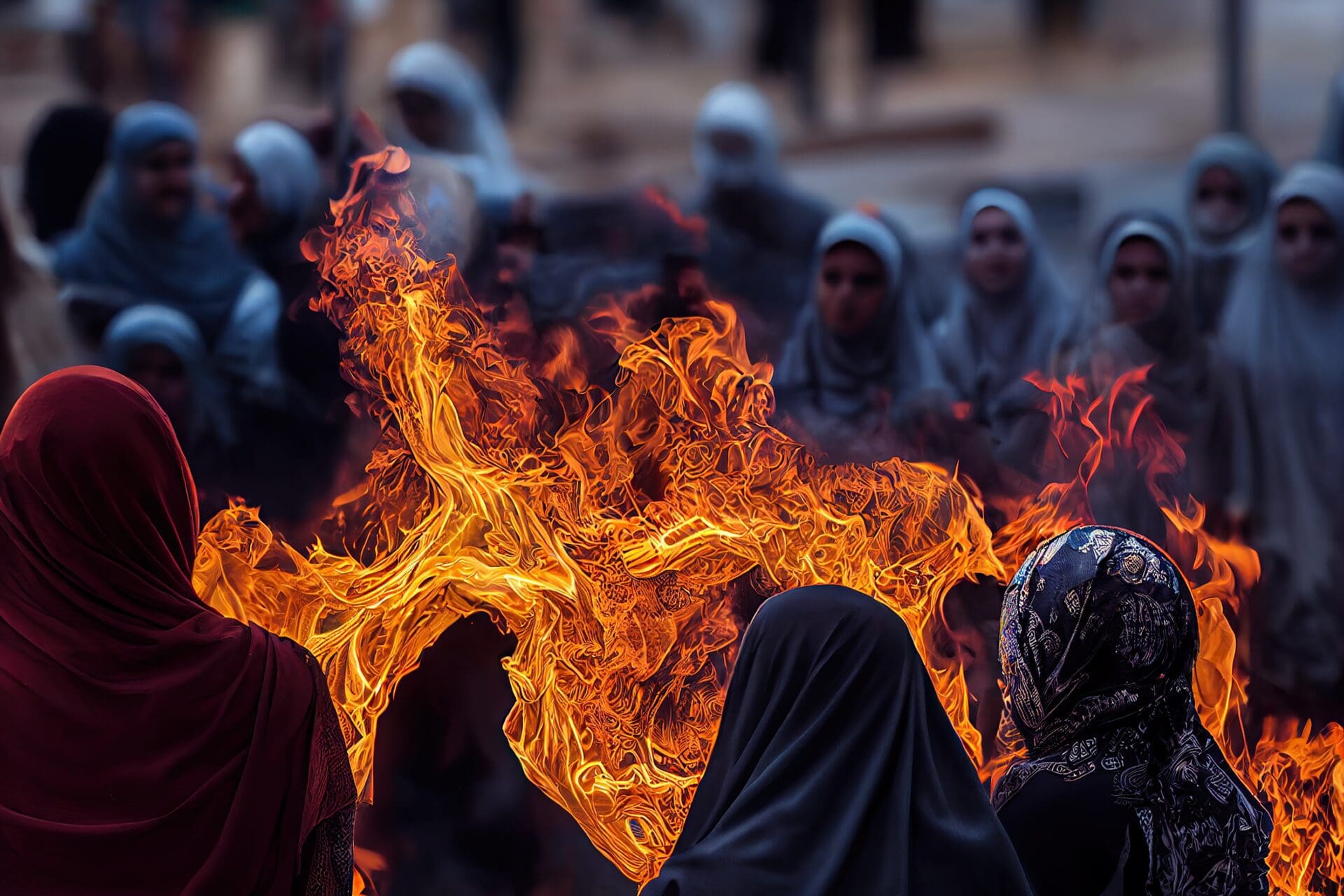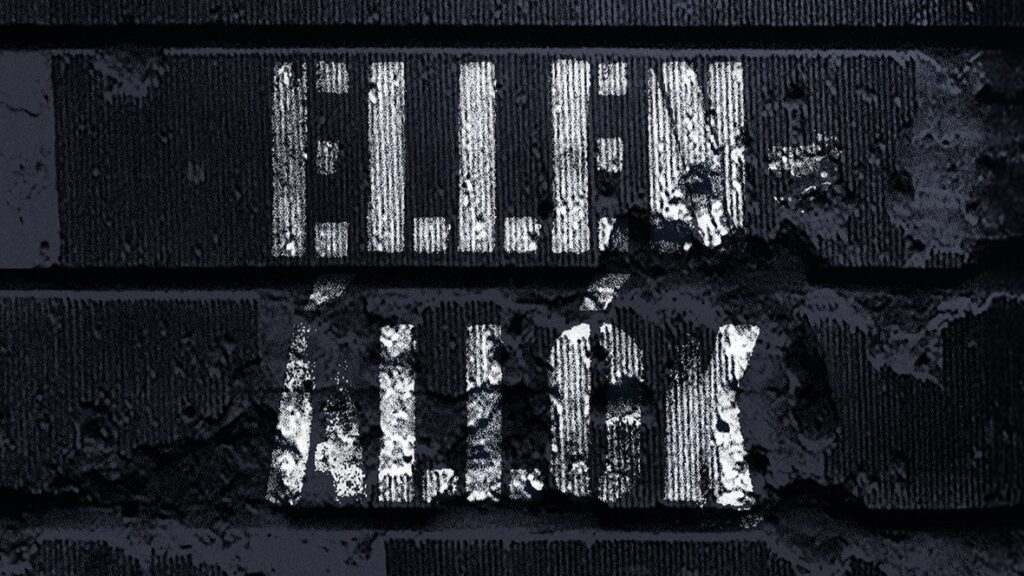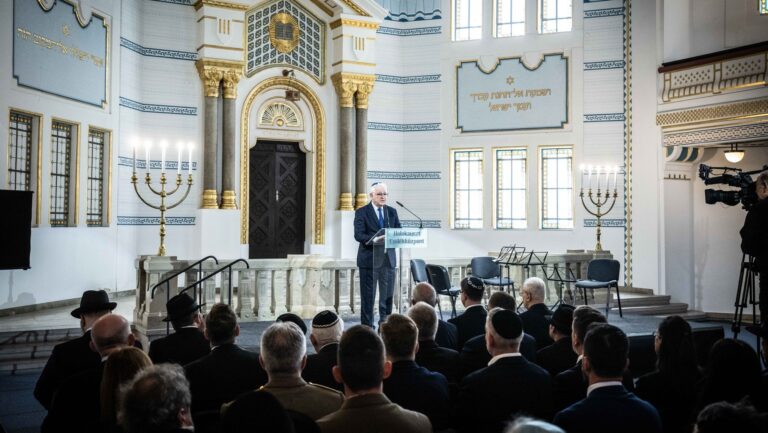In what appears to be a minor victory for the Iranian women, on Saturday Iran’s Attorney General Mohammad Jafar Montazeri said the Islamic Republic has disbanded the ‘morality police’, which, he stressed, had never had anything to do with the judiciary. He added, however, that the judiciary continues to monitor the public conduct of Iranians, a hint that hijab rules have not been scrapped and only the special street patrols have been disbanded.
The recent protest movement in Iran was triggered by the death of Mahsa Amini, a 22-year-old woman, when she was arrested by the ‘morality police’ for ‘improper attire’. During the nationwide protests, women removed the mandatory hijab and set their headscarves on fire in the streets as a sign of protest.
Institutional misogyny is one of the pillars, i.e., an external symbol of Iran’s Islamic theocracy—as in the rest of the Islamic world where the sharia has precedence—which requires women to wear head veils. The regime has gone so far as to promote the black chador, a large piece of cloth, which leaves only the face exposed, just as it has been reinstituted for Afghan women by the Islamic Emirate of Afghanistan (the Taliban) when they retook the reins of government in August 2021.
Almost immediately, the Taliban imposed brutal restrictions, the harshest of which were reserved for women, such as a ban on girls’ secondary education, and restrictions on the movement of females, requiring them to be accompanied by a male family member while travelling, ordering them to cover their faces in public, and no longer allowing them to play sports.
The jihadists also dissolved the Ministry of Women’s Affairs and the Afghanistan Independent Human Rights Commission (AIHURC). These measures have left female victims of domestic violence with no legal remedy or support at a time when there are reports of increased forced marriages, including child marriages.
In an article published by Foreign Affairs titled ‘Afghanistan’s Women Are on Their Own: How the International Community Turned Its Back’, author Shaharzad Akbar, who chaired the aforementioned AIHURC, stated:
‘What has become excruciatingly clear is that Afghan women’s rights activists should not assume that the leaders of the democratic world will stand with them; such leaders and the institutions they represent no longer have much ability to protect Afghan women, nor much interest in doing so.’
She went on to justly criticize the Islamic world for not coming to the defence of women. Yet a primary reason for the degradation of women in Afghanistan, something that politically correct politicians and the mainstream media, including those who gripe over this like Al Jazeera, refuse to admit, is that the fundamental tenets of Islam demand it.
Islamic Texts that Uphold the Inequality of Women
Many of those, including notable figures like Akbar, who rightly call out the injustices against women never analyze, let alone critique, the Islamic texts, namely certain Quranic verses and hadiths, that Islamists like the Taliban cite to justify their abuses:
‘Men are in charge of women by what Allah has given one over the other and what they spend from their wealth. So righteous women are devoutly obedient, guarding in absence what Allah would have them guard. But those from whom you fear arrogance—advise them; forsake them in bed; and, strike them. But if they obey you [once more], seek no means against them. Indeed, Allah is ever Exalted and Grand.’ —Sura 4, 34
Part of the social disparity between a man and a woman exists because females are considered less intelligent than men, since Allah made them so. As presented by medieval scholar Muhammad ibn Jarir al-Tabari:
‘According to Yunus – Ibn Wahb – Ibn Zayd: Adam replied: “No, my Lord, but I feel shame before You.” When God asked what had caused his trouble, he replied: “Eve, my Lord.” Whereupon Allah said: “Now it is My obligation to make her bleed once every month, as she made this tree bleed. I also make her stupid, although I had created her intelligent (halimah), and must make her suffer pregnancy and birth with difficulty, although I made it easy for her to be pregnant and give birth.” Ibn Zayd said: ‘Were it not for the affliction that affected Eve, the women of this world would not menstruate, and they would be intelligent and, when pregnant, give birth easily.’[1]
‘Once Allah’s Apostle…passed by the women and said: “O women! Give alms, as I have seen that the majority of the dwellers of Hell-fire were you (women).” They asked: “Why is it so, O Allah’s Apostle?” He replied: “You curse frequently and are ungrateful to your husbands. I have not seen anyone more deficient in intelligence and religion than you. A cautious sensible man could be led astray by some of you.” The women asked: “O Allah’s Apostle! What is deficient in our intelligence and religion?” He said: “Is not the evidence of two women equal to the witness of one man?” They replied in the affirmative. He said: “This is the deficiency in her intelligence. Is [it not] true that a woman can neither pray nor fast during her menses?” The women replied in the affirmative. He said: “This is the deficiency in her religion.”’ Sahih al-Bukhari, Book 6, hadith 301.
While the raping of a woman is a crime in all countries, sharia courts in Islamic states, such as Saudi Arabia, Iraq, and Libya allow a rapist to escape punishment by marrying his victim. In other instances, the victim who asks for justice is often prosecuted with the crime of zina (adultery). This is because since the sharia does not allow forensic evidence to be used, such as DNA, rape can only be proven if the rapist admits to the crime or if there are four male witnesses who corroborate to the woman’s testimony.[2] If the rape is not proven, as it often appears to be the case, the woman’s complaint then becomes a ‘confession’ of adultery, for which she can be flogged or stoned. The male aggressor remains unpunished, since he never admitted to a sexual act. At the same time, such defilement was allowed by the Prophet of Islam:
‘The believers must (eventually) win through, those who humble themselves in their prayers; who avoid vain talk; who are active in deeds of charity; they guard their private parts [abstaining from sexual relations], except with those joined to them in the marriage bond, or [the captives] whom their right hands possess, for they are free from blame.’ —Sura 23, 1-6
This fosters the idea that a woman is her husband’s property, which is not different at all from what some of the celebrated Islamic philosophers taught. In other words, man is to ‘own’ his wife, not vice-versa.
Since a male is believed to possess a superior intellect, meaning females cannot decipher for themselves, it is only logical that they need to be under the custody of their husbands. Under this rationale, with respect to marriage, a man can marry up to four wives but not vice versa:
‘And if you fear that you will not deal justly with the orphan girls, then marry those that please you of [other] women, two or three or four. But if you fear that you will not be just, then [marry only] one or those [which] your right hand possesses [slaves]. That is more suitable that you may not incline [to injustice].’ —Sura 4, 3
Child Marriages
A fundamental application of the Islamic texts is to justify child marriages, specifically those of girls.
Iran is just one nation among dozens of other Islamic countries that has legalized or encourages underage marriages. The Chairman of Legal Affairs in Iran, Mohammad Ali Isfenani, stated in defence of child marriages:
‘As some people may not comply with our current Islamic legal system, we must regard nine as being the appropriate age for a girl to have reached puberty and qualified to get married. To do otherwise would be to contradict and challenge Islamic Sharia law.’
In fact, Ayatollah Khomeini himself married a ten-year-old girl when he was twenty-eight. He called marriage to a prepubescent girl ‘a divine blessing,’ and advised the faithful: ‘Do your best to ensure that your daughters do not see their first blood in your house.’[3]
Khomeini’s justification can be found in the (Shi’ite) hadith: ‘The Prophet entered upon ‘Aa’ishah when she was 10 years old, and that one does [not] enter (upon) a jaariyah (girl) until she became a woman.’ —Al-Kulayni, Al-Kafi, Vol. 7, 388, hadith 12
This is parallel to the Sunni hadith, which states:
‘Aisha reported that Allah’s Apostle married her when she was seven years old, and she was taken to his house as a bride when she was nine, and her dolls were with her; and when he (the Holy Prophet) died she was eighteen years old.’ —Sahih Muslim, Book 8, hadith 3311
Shaarzad Akbar is correct when she says: ‘[I]f the international community continues its desultory approach to women’s rights in Afghanistan, it will lose its credibility on the issue across the globe.’ Yet in order to tackle the inequality of women in Afghanistan, in Iran, and in other Islamic countries, the aforementioned verses from the Quran and the hadiths have to be addressed first.
[1] Franz Rosenthal (trans), The History of Al-Tabari: General Introduction and From the Creation to the Flood, Vol. I., Albany, SUNY Press, 1989, 280-281; Sam Shamoun, ‘Did You Know that Muhammad Was a Misogynist?‘ Al-Islam.org, https://www.answering-islam.org/authors/shamoun/rebuttals/williams/mo_misogynist.html, accessed 4 Dec. 2022.
[2] The Quranic position of four witnesses stems from Sahih al-Bukhari, Book 59, hadith 462, when the Prophet’s favourite wife, Aisha, ‘was accused of cheating [on her polygamous husband]. Three witnesses corroborated the event, but Muhammad apparently did not want to believe it, and so established the arbitrary rule that four witnesses are required.’ Cfr. ‘Rape and Adultery’ in The Religion of Peace.
[3] Robert Spencer, The Truth About Muhammad, Washington, DC, Regency, 2014, 171-172.








